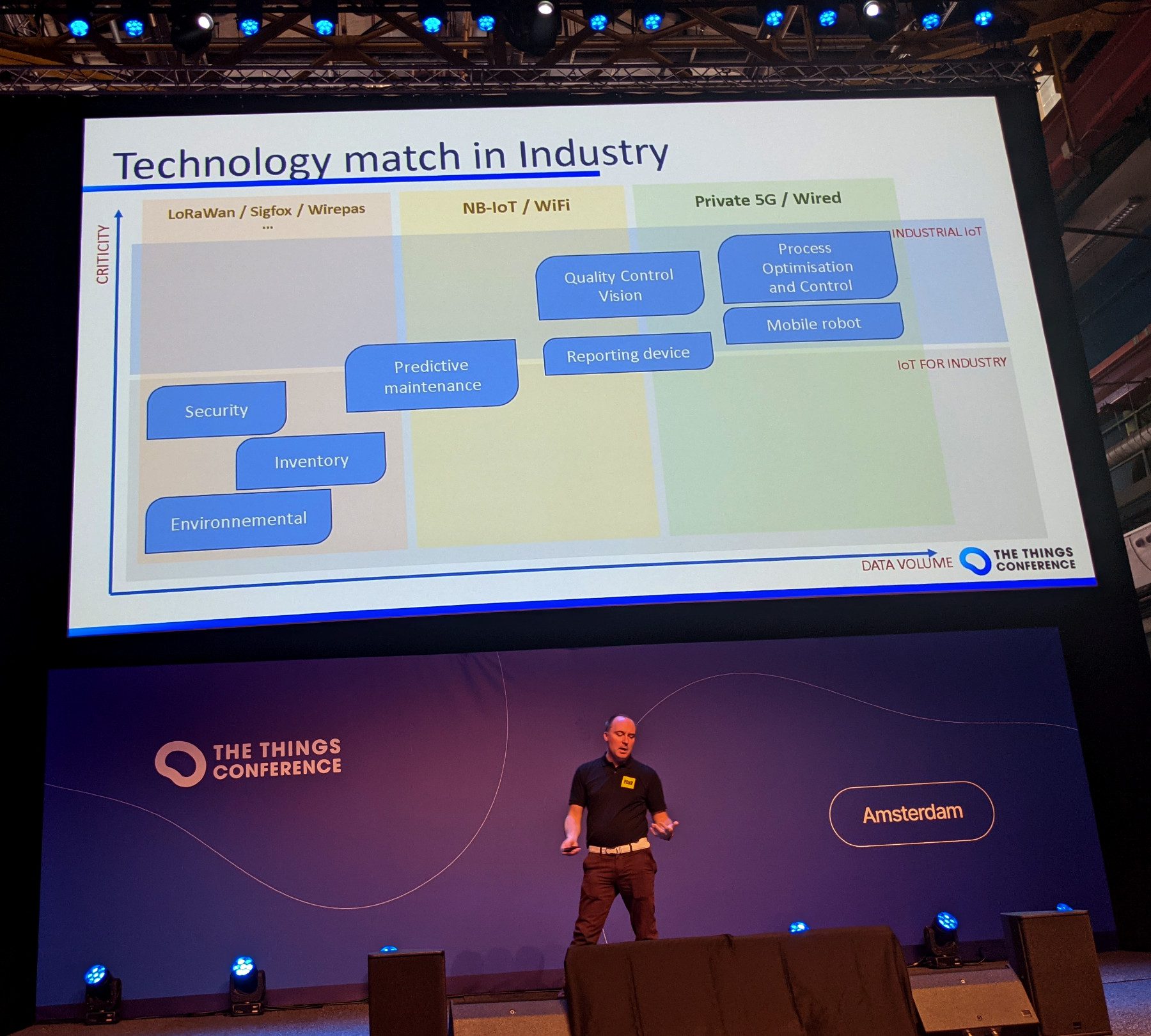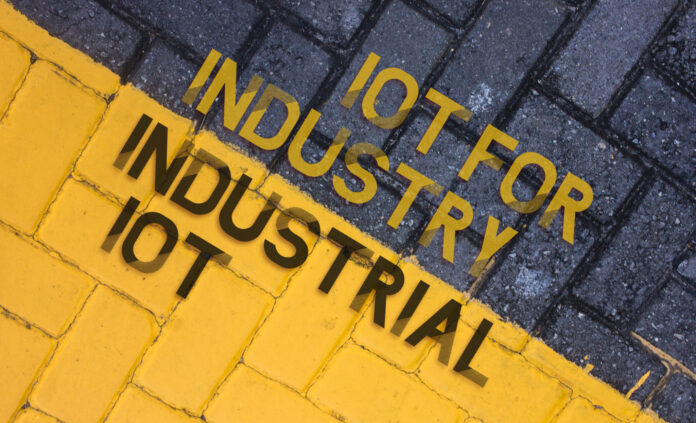A helpful snapshot of the developing IoT market, from a presentation at The Things Conference in Amsterdam a couple of weeks back; Paul Pinault, vice president of platform and market strategy at France-based Braincube, took to the stage to draw interesting, possibly important, distinction between how IoT sensors are deployed in industrial processes, in the task of making things, and in industrial environments, to bring additional context to their production.
This, reckons Pinault, is the difference between ‘industrial IoT’ (IIoT) and ‘IoT for industry’, which might be – but is not, except to make headlines – usefully/awkwardly acronymized (*) as ‘IoT41’; these terms, more often used interchangeably (note to self) to describe IoT use-case scenarios, have different meanings to describe different applications in the Industry 4.0 space, observed Pinault – and employ different wireless technologies to deliver them.
And for that, read: high-power industrial 5G at the critical IIoT end of Industry 4.0 and low-power wide-area (LPWA) standards such as LoRaWAN and Sigfox at the straight IoT end (and the likes of Wi-Fi and, interestingly, NB-IoT in the middle). His point is wireless IIoT is about volume, variety, velocity in big data, which (maybe only) 5G-IoT delivers, and that IoT for industry is for discrete IoT monitoring in industrial venues, which the LPWA-IoT does well.
Pinault says: “IIoT is a question of the volume, variety, and velocity of data – [which is] the basic definition of big data… It is a really specific domain. All the sensors are [in] the production machine, and not additional [to it]; they are the production machine. Where there are machines, there are hundreds, sometimes thousands, of sensors. And they are all different. Because they are capturing temperature, speed, vibration, and many different things.”

By contrast, non-industrial ‘IoT in industry’ is just IoT in industry; it is an ancillary to connected production in factories and plants. “You have IoT for healthcare, IoT for homes, IoT for whatever-you-want. So IoT-for-industry is [just] about getting new data to [further] optimise production, or do security, or all kinds of stuff… [Because] industry needs extra data [which] can’t be extracted from the machine. [But] it is not critical [IoT] because the process works without it.”
An aside: the same point might be made about industrial 5G (for IIoT, utilising 3GPP release 17/18-level URLLC) and straight (release 15/16-level) MBB-style 5G for (IoT for) industry. Which raises the point, as well, that industrial 5G for IIoT remains something of a future-tech, and that any kind of wireless IIoT is more likely to run on Wi-Fi – or LTE, of course. Pinault says the same: “Everything is wired; most production machines – about 100 percent – are wired.”
But his point, also, is that industrial machines are multiplying in factories and plants, and increasingly going wireless – such as with automated guided vehicles (AGVs), notably, which bring mobility and extend automation, and form part of the production line, also. “Industry wants to dynamically [transform] the shop floor to adapt to the constraints of production. For that reason, it is better to have less cable… [and to] simplify network connectivity.”
And Wi-Fi – Wi-Fi 6, anyway – will not cut it, he says, making the wireless IIoT end of Industry 4.0 a 5G affair, in the main (and an industrial 5G affair as operations get more critical). “There is a problem with Wi-Fi 6 [because it] comes from the consumer ward, and there is no quality-of-service. Which means there is a risk to production if someone transfers a big file on the same frequency – which is totally not-acceptable in an industrial environment,” he says.
“Which explains the interest in 5G – in your own frequency and your own channel; so [even if] latency is reduced, it is stable. So 5G may be the future of wireless in IIoT.” On Pinault’s slide-chart of ‘tech matches’, Wi-Fi drops down both axes, for criticality and bandwidth, to occupy a middle zone of industrial cases, for applications like ‘quality control’ and ‘machine vision’; NB-IoT, in the same middle ground, is pegged mainly for predictive maintenance, it appears.
Pinault, diplomat supreme, makes room for practically every connectivity technology for IoT, particularly in the LPWA. “[Everyone compares] Sigfox to LoRaWAN to NB-IoT… but they are not in direct competition… There is no big overlap. My main message is they are not in competition. It is not a question of 5G versus LoRaWAN [say]. It is really a question of how to use both [/all] to… cover use cases in the best way,” he comments.
The other point from the Amsterdam session was how these various IoT inputs come together in industrial venues, with IIoT supplying the meat in the sandwich, and contextual IoT plugging upstream and downstream into the same Industry 4.0 digital twin system – on the kind of platform that Braincube (of course, and others) offers. So while the IIoT inputs gun the engines, the rest of them manage the cabin controls. As it were; to mix metaphors.
But Pinault puts it well, explaining how the ancillary IoT-for-industry system raises overall factory performance, leading to improvements on the factory line itself. He says: “You have [these additional] IoT sensors… [sending] data from the environment around the manufacturing process… to the IIoT platform… to improve the quality of the product, the energy consumption, and all the [other] elements.”
He adds: “There are plenty of interesting use cases… like environmental monitoring, predictive maintenance, inventory management, site security – which are all working well. And in those cases, LoRaWAN is a good technology – because it is low-cost, low-power, long range, and secure. And it can be deployed in a private environment, which is important for manufacturing, and there is a large portfolio of sensors [as well].”

